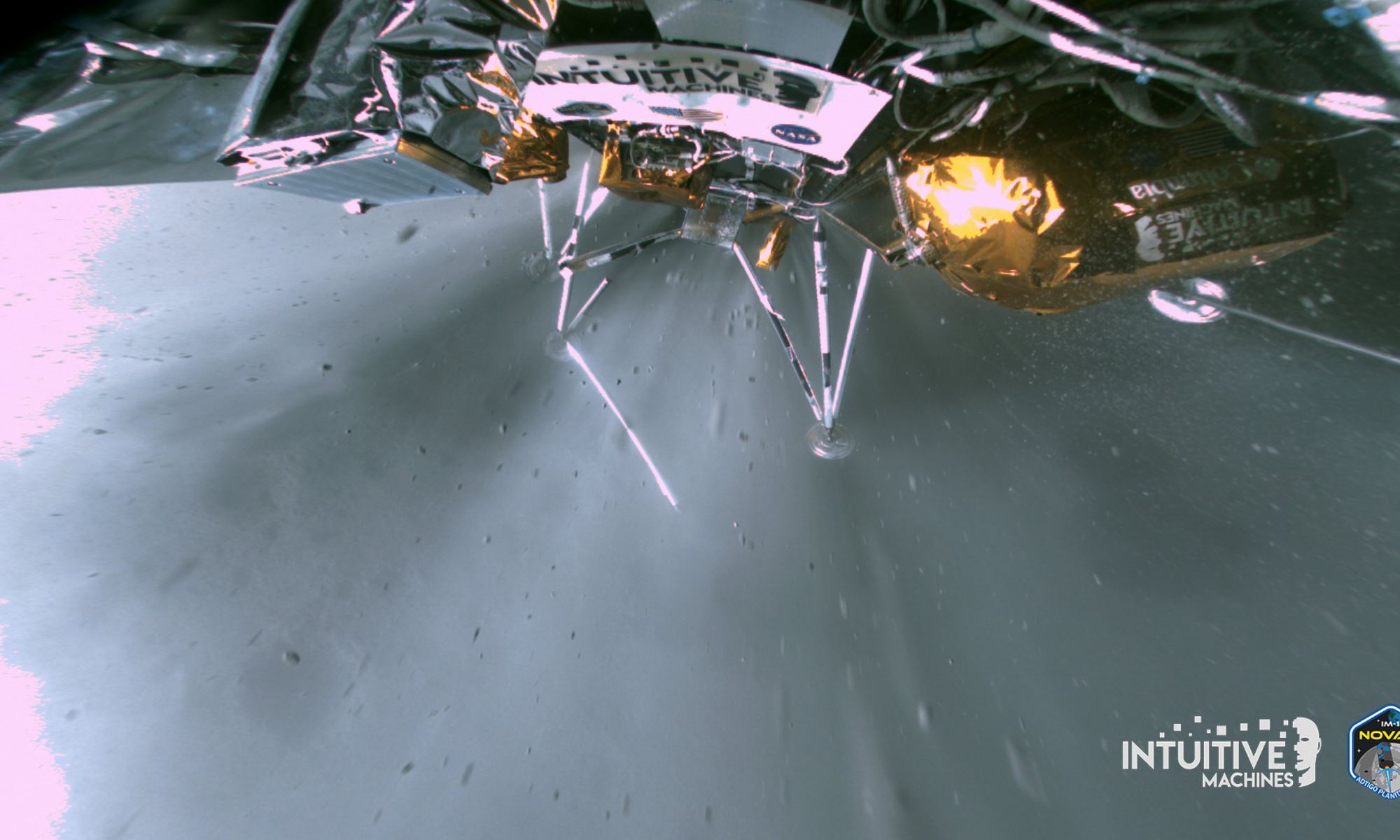On February 15th, Intuitive Machines (IM) launched its first Nova-C class spacecraft from Kennedy Space Center in Florida atop a SpaceX Falcon 9 rocket. On February 22nd, the spacecraft – codenamed Odysseus (or “Odie”) – became the first American-built vehicle to soft-land on the lunar surface since the Apollo 17 mission in 1972. While the landing was a bit bumpy (Odysseus fell on its side), the IM-1 mission successfully demonstrated technologies and systems that will assist NASA in establishing a “sustained program of lunar exploration and development.”
After seven days of operation on the lunar surface, Intuitive Machines announced on February 29th that the mission had ended with the onset of lunar night. While the lander was not intended to remain operational during the lunar night, flight controllers at Houston set Odysseus into a configuration that would “call home” if it made it through the two weeks of darkness. As of March 23rd, the company announced that their flight controllers’ predictions were correct and that Odie would not be making any more calls home.
The company started listening for a wake-up signal from Odysseus on March 20th, when they projected that there was enough sunlight in the lander’s vicinity. At the time, it was thought that this could potentially charge Odysseus‘ power system, allowing it to activate its radio and reestablish contact with Houston. However, three days later, at 10:30 AM Central Standard Time (08:30 AM PST; 11:30 AM EST), flight controllers determined that the lander was not charging up after it completed its mission.

This consisted of the Nova-C spacecraft making its inaugural soft landing on the Moon, the first time an American spacecraft has done so in over 50 years. The IM-1 mission was also the first time a spacecraft used methalox – the combination of liquid methane and liquid oxygen (LOX) – to navigate between the Earth and the Moon. While the IM-1 was not expected (or intended) to survive the lunar night, the data acquired by this mission could prove useful as the company continues to improve the lunar landing systems to deliver payloads to the Moon.
One of the company’s main objectives is to develop heat and power sources that can “keep systems from freezing during the lunar night.” This technology will greatly extend the life of lunar surface missions and facilitate the buildup of infrastructure on the Moon’s surface. A second Nova-C lander with the IM-2 mission will launch aboard a Falcon 9 no earlier than December 2024. This mission will land a drill and the Polar Resources Ice Mining Experiment-1 (PRIME-1) mass spectrometer near the south pole of the Moon.
This NASA payload will demonstrate the feasibility of In-Situ Resource Utilization (ISRU) and measure the volatile content of subsurface samples. ISRU and the presence of water are vital to the creation of a lunar base and the ability to send crews to the lunar surface well into the foreseeable future. A third mission (IM-3) is scheduled for early 2025, which will carry four NASA payloads to the Reiner Gamma region of the Moon, a rover, a data relay satellite, and secondary payloads to be determined. All three launches were contracted as part of NASA’s Commercial Lunar Payload Services (CLPS) program.
In addition, the IM-1 mission controllers and company managed to have a final farewell with the Odysseus mission before nightfall and the depletion of its battery power. On February 22nd, the lander transmitted a final image (shown below), which mission controllers in Houston received by February 29th. The image, Intuitive Machines said in a statement, “showcases the lunar vista with the crescent Earth in the backdrop, a subtle reminder of humanity’s presence in the universe. Goodnight, Odie. We hope to hear from you again.”

Further Reading: Intuitive Machines

